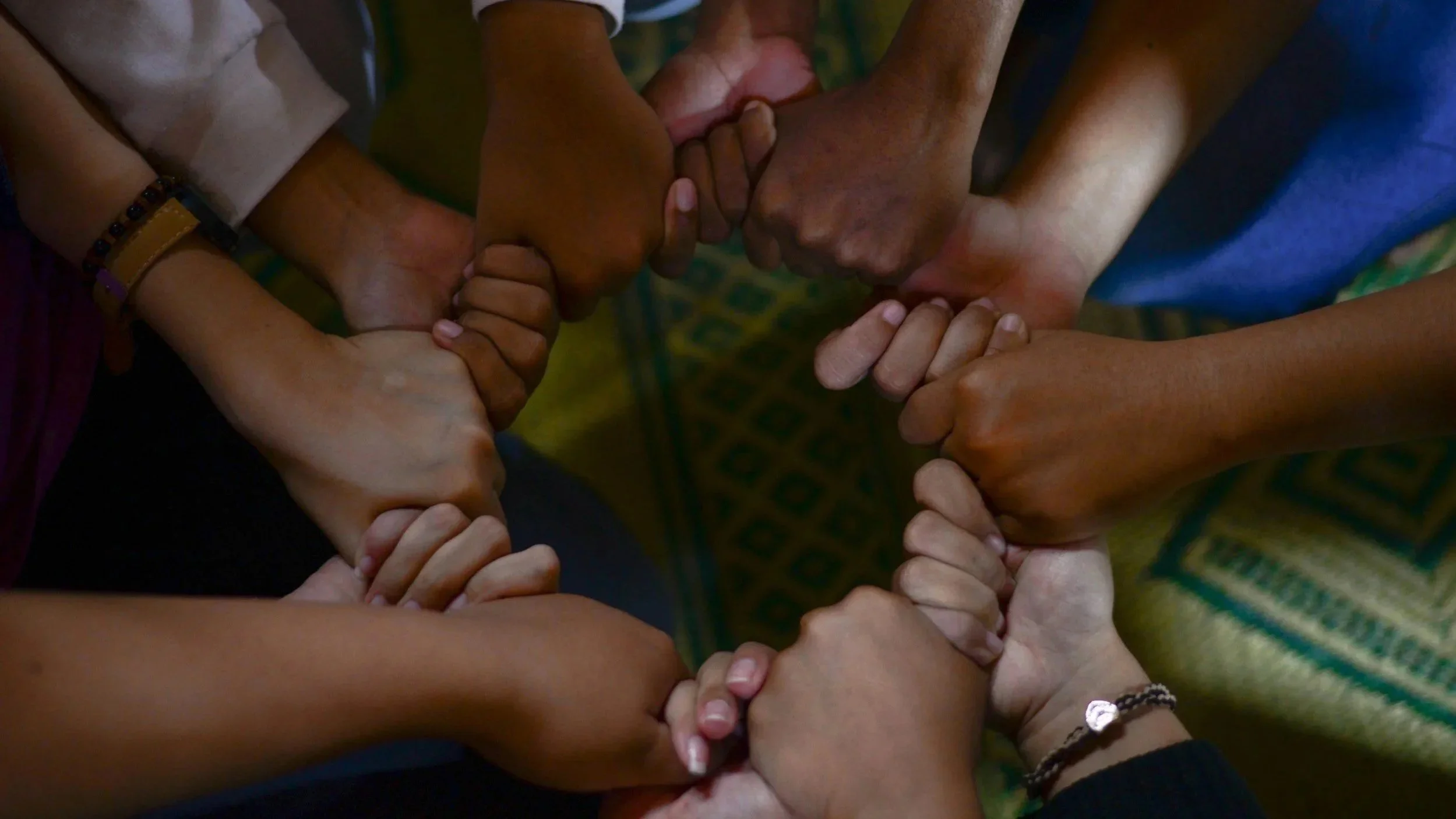Your Soft Introduction to Women’s Circles
It’s January 2024, and I’m sitting in the meditation room of a retreat house in southern Portugal. The moon is full, my eyes are closed, and I’m breathing with intention. I’m not alone.
I’m sitting in a circle with 19 other women from different parts of the world. We’re holding hands and soaking in our last moments as a group. Less than a week ago we were strangers, and now, we’re leaving Portugal as lifelong friends.
From across the room a gentle voice reads, “She stumbles, they catch her—holding her up. Another struggles, she’s surrounded by the love she’s given out. It’s a circle of women giving, taking, and growing, and it is within that circle she finds her place.”
We pass a hand squeeze around the circle to signify our bond of sisterhood.
As cult-y as it may sound to some, gatherings like this aren’t new, and they’re not as uncommon as you might think.
Women’s Circles as an Ancient Tradition
Women’s circles are an ancient practice dating back over 300,000 years. Oftentimes, these ceremonial circles took place under the full moon or during certain points of the menstrual cycle. This was a time for women to share wisdom, celebrate sisterhood, and honor the divine feminine.
Contrary to popular belief, the divine feminine has nothing to do with gender. In an article from Tiny Rituals, author and founder of Uplifted Yoga, Brett Larkin, says, “The divine feminine refers to the energy that exists within and without us that is softer, nurturing, intuitive, and empowered. It can be looked at in a similar way to yin energy or Shakti.”
Larkin explains, “This shade of energy can be found in the moon, the ocean, the trees, and within us. It is who we are when we are wild and untamed, it is also who we are when we are soft and still.”
It’s disappointing, though not surprising, that women's circles became less and less common with the rise of Christianity and other male-centered systems (aka the patriarchy). The celebration of the divine feminine was labeled as something evil and was associated with witchcraft.
When accusations of being a witch became a matter of life and death, these traditions were lost—or at the very least, kept tightly under wraps. The results of these lost traditions remain with us today.
I’ve found it difficult to find accurate information on the history of women’s circles. While we know there’s a definite history that exists, it’s not a heavily studied topic among academics and researchers.
The lack of readily available historical information further suggests that women's circles are still seen as “woo-woo,” rather than being viewed as a legitimate spiritual practice.
The Re-Emergence
Despite remaining undercover for centuries, women’s circles started to re-emerge in American culture in the 1970s during the women's liberation movement. Although women’s liberation is most commonly associated with the sexual liberation of women, it was also about the spiritual and social liberation of women.
Gloria Steinem, a world renowned journalist and feminist activist, hosted talking circles throughout the 70s as an organizing tool during the second wave of feminism in the US. Inspired by Cherokee Nation culture, Steinem used these talking circles as a way to organize, build community, and encourage democratic decision making.
Although Steinem’s talking circles weren’t limited only to women, women were the most frequent attendees of these gatherings. During a time when it was more common for women to reject traditional male-centered religions, these circles became a place of spiritual connection.
Unlike traditional religions, which de-centered the experience of women, these circles honored the inherent power of the divine feminine. During a time when women couldn’t even have their own credit cards, the spiritual celebration of womanhood was revolutionary.
Modern-Day Women’s Circles
The truth is, women thrive when we gather together. As a longtime feminist, I’ve been familiar with this truth for quite some time, but never felt its true impact until my time in Portugal. The power felt between a group of loving, open, and accepting women is undeniable.
Despite increased acceptance of the struggles women face, there’s still a lot about womanhood that often goes unspoken:
The invisible labor of being caretakers in our families
Our tendency to people-please, even in the most unbearable situations
The way we’ve been socialized to repress our anger
How we shapeshift to fit ourselves (literally and metaphorically) into the current fads
So much of our authenticity is kept secret. ‘Woman’ is often a lonely title to hold.
If you’re feeling the urge to gather with other women, allow me to encourage you to put together a women’s circle in your own area. The way I see it, the only requirements are to show up as you are, and give other women the grace to do the same.
Do it brokenhearted and messy, or do it with unbridled joy. When women gather, magic happens.

